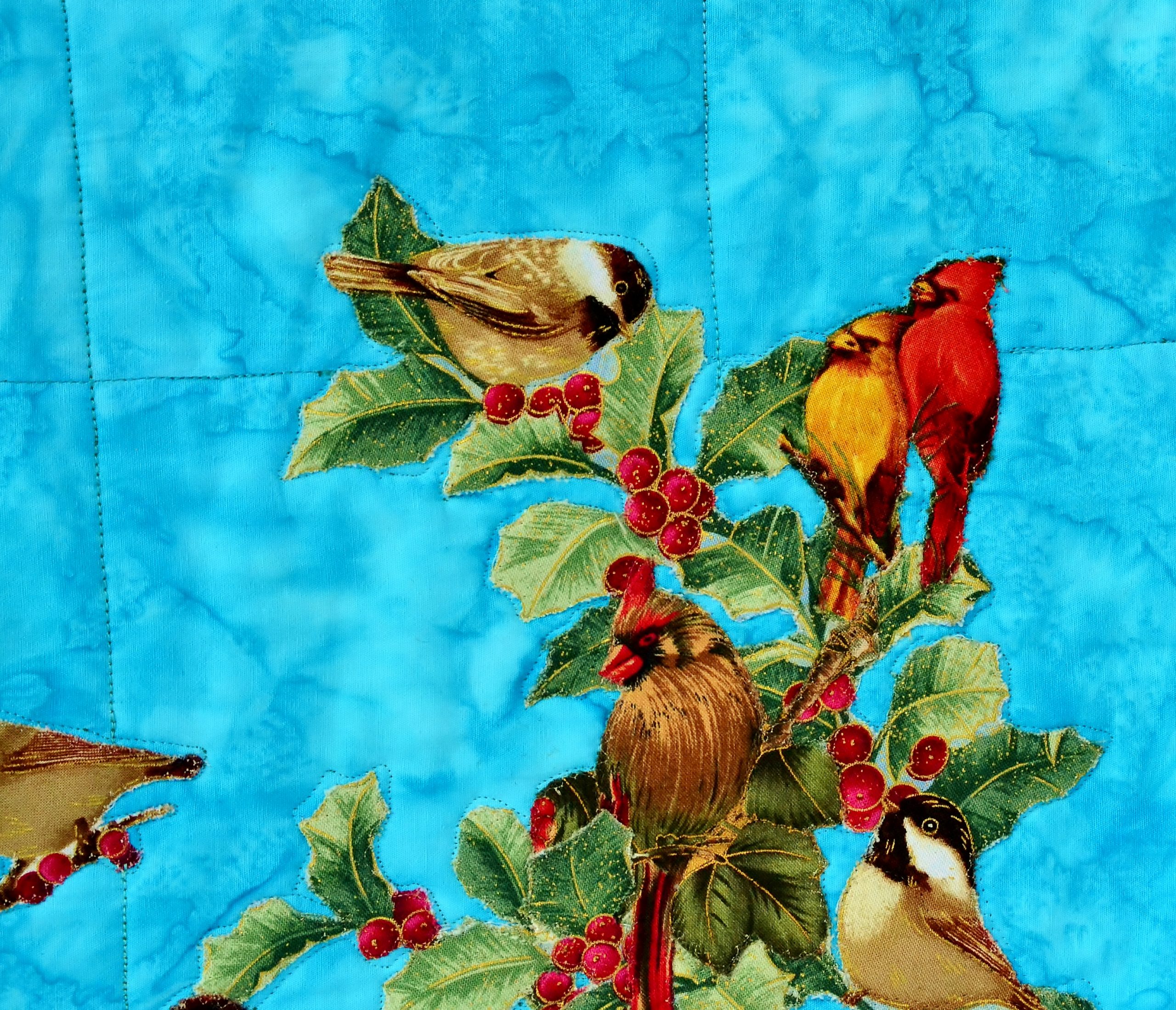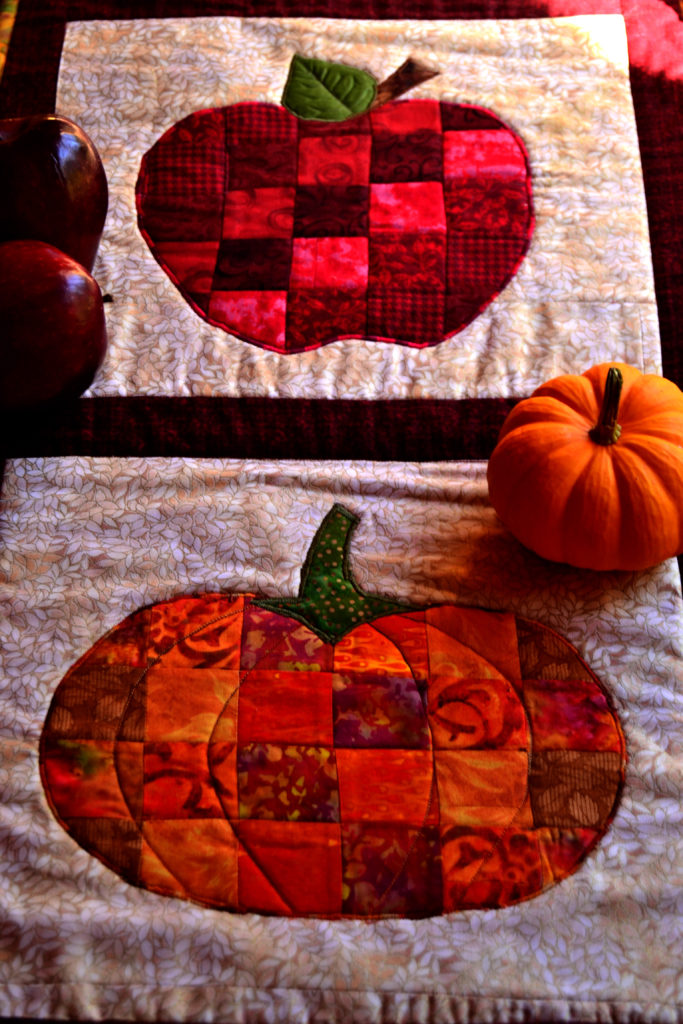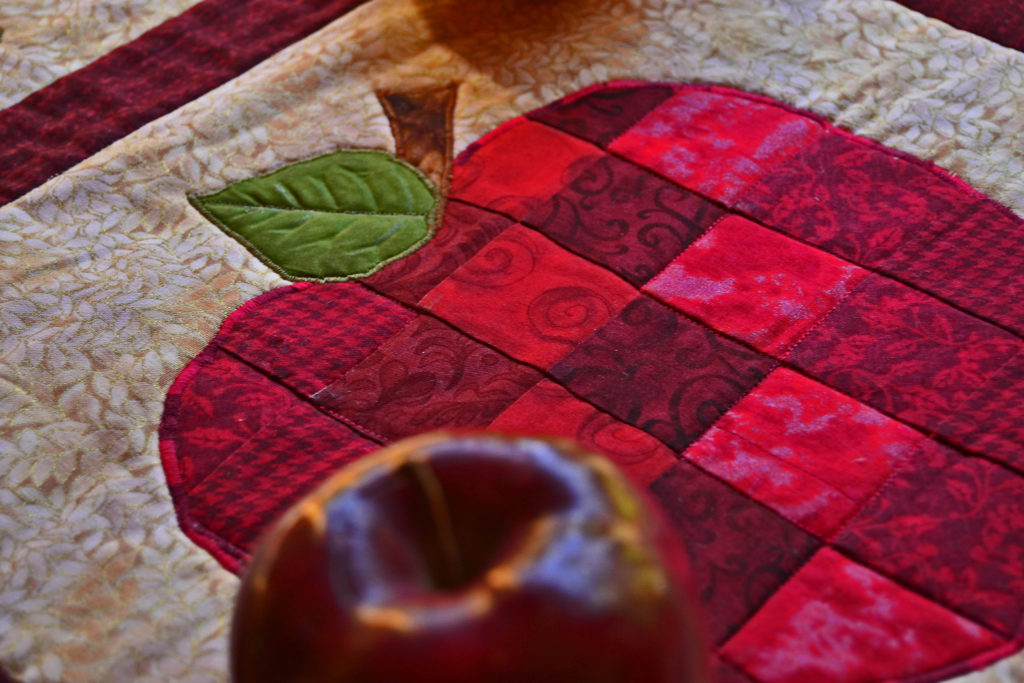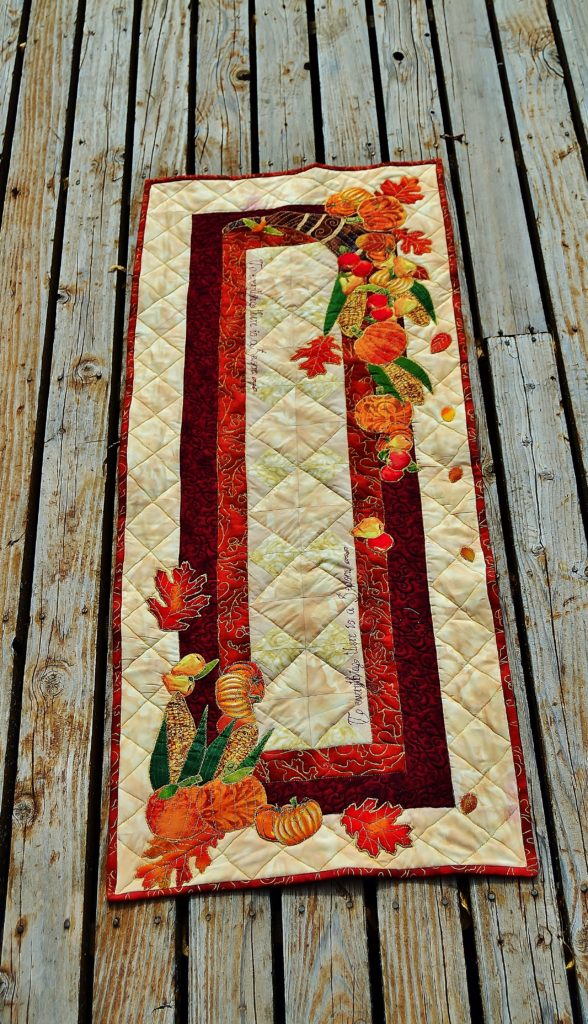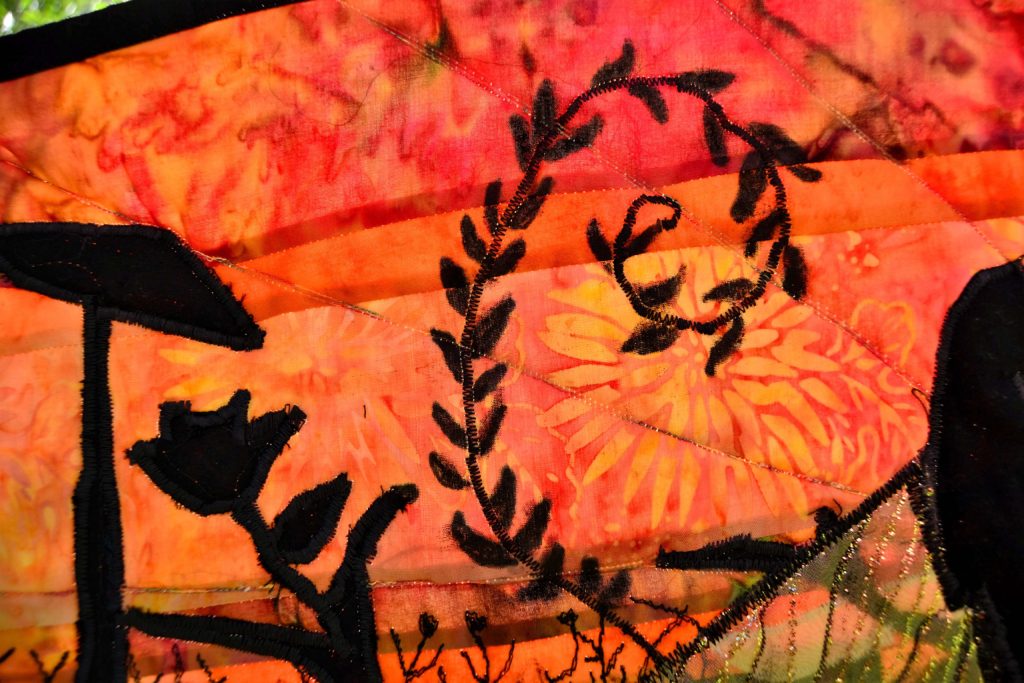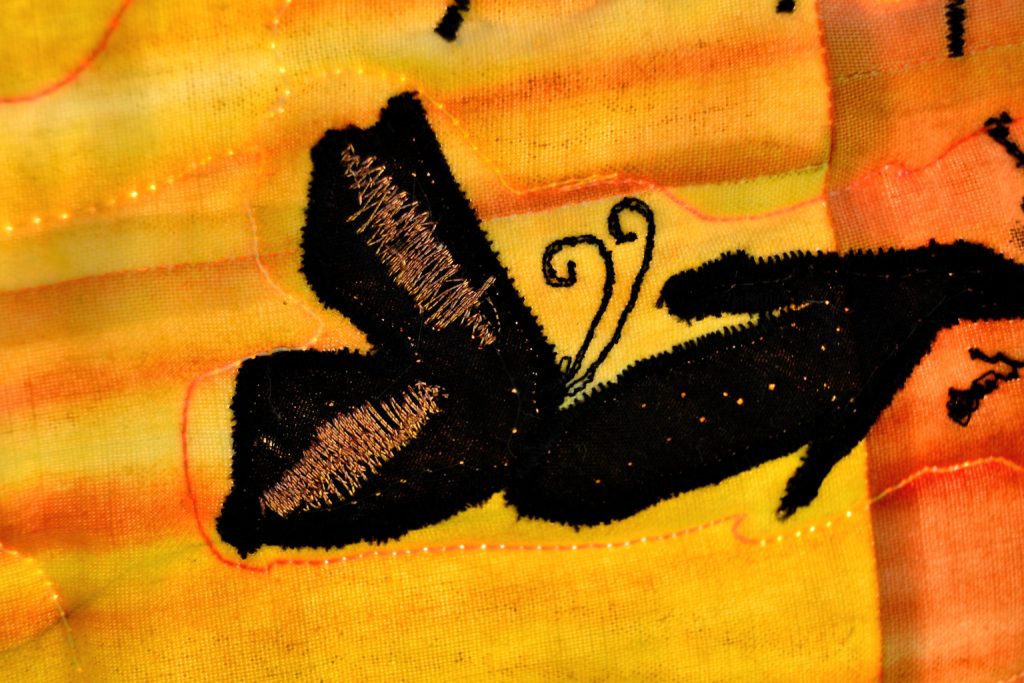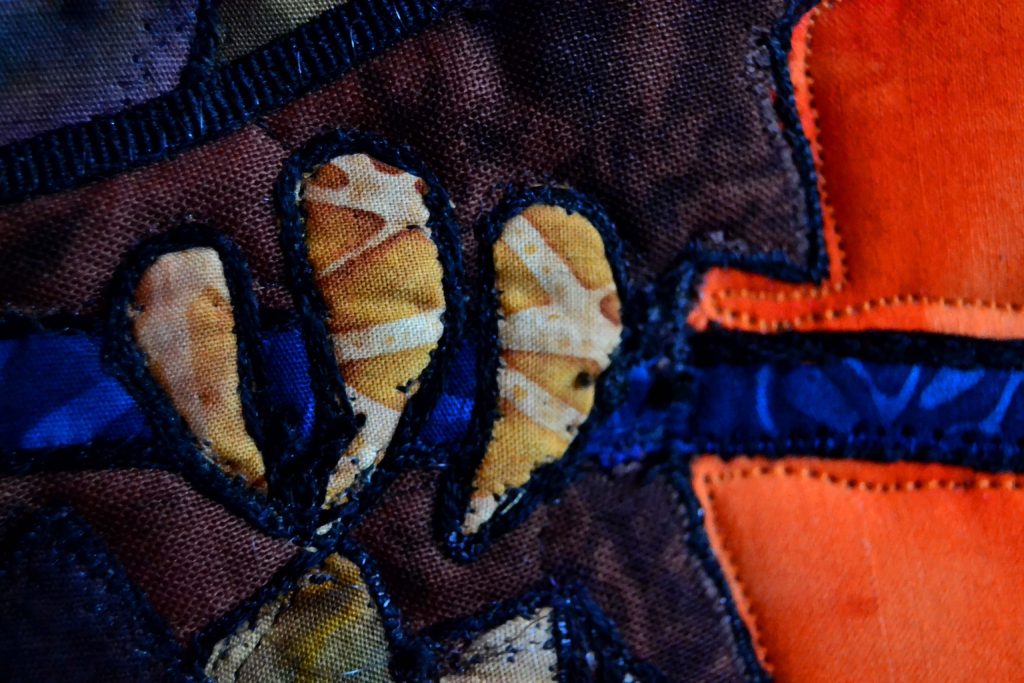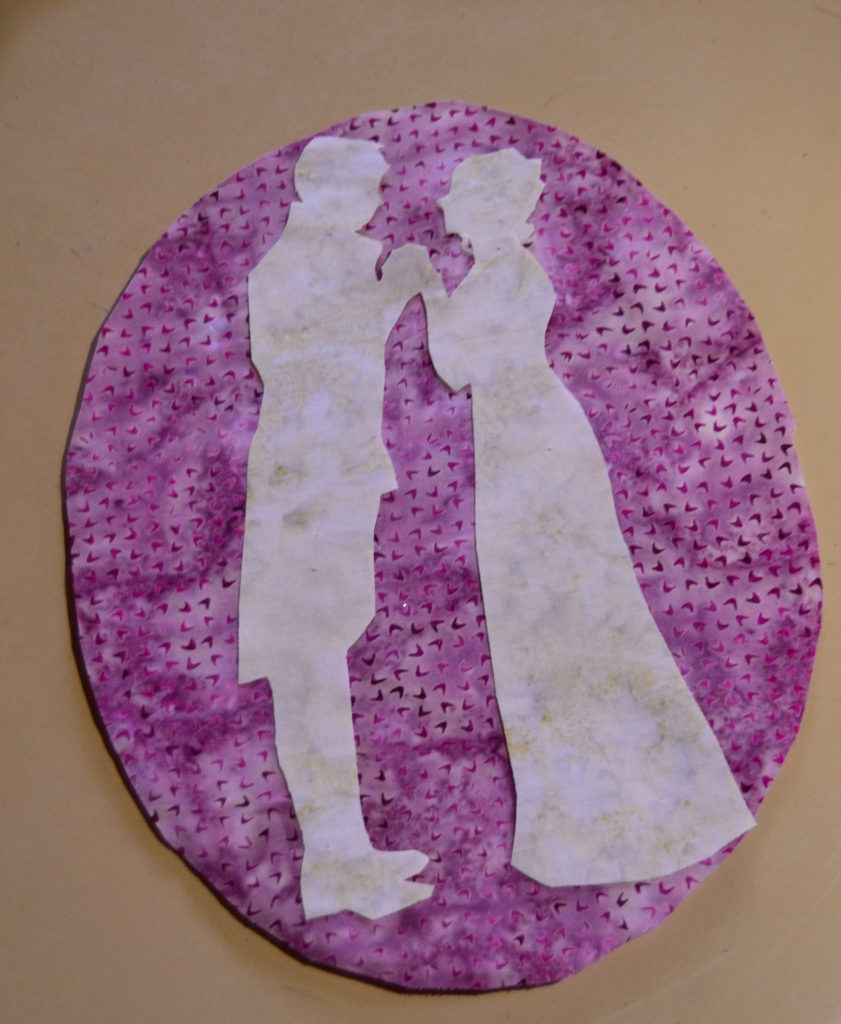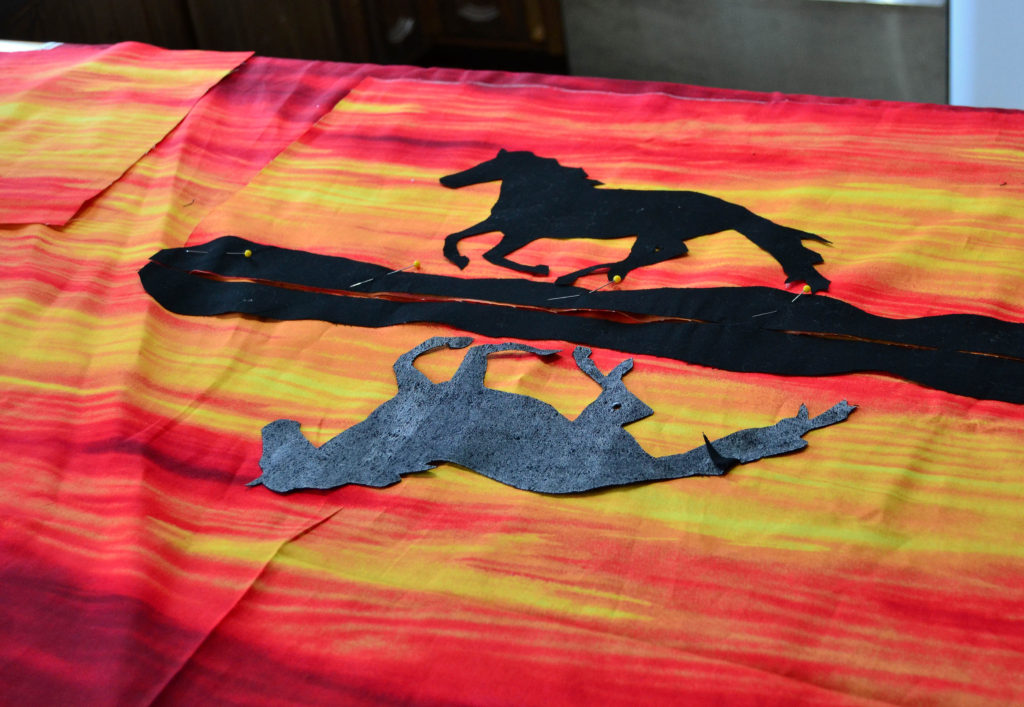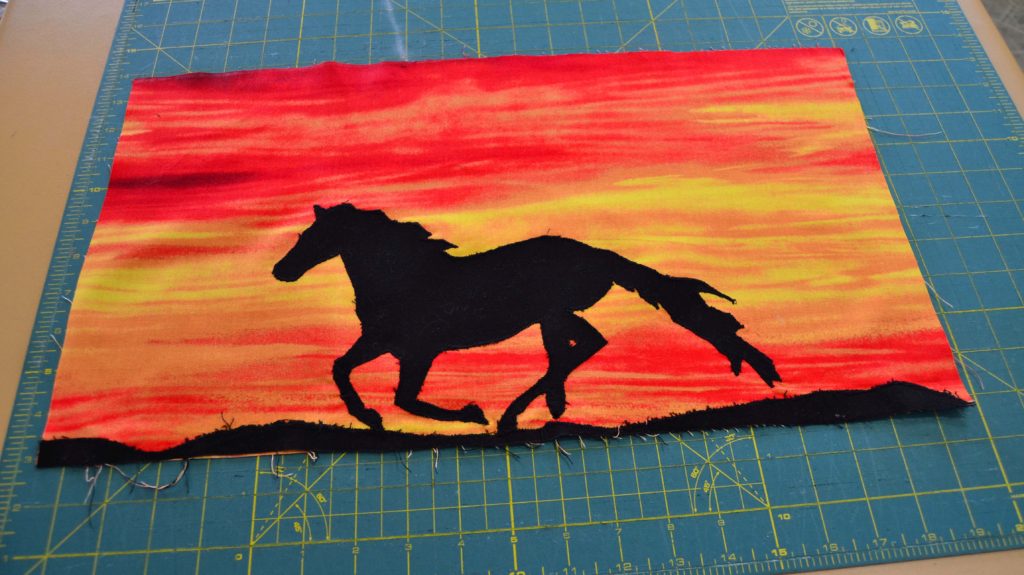Wonder-Under – or soft paperbacked fusible webbing – is another one fabulous quilting invention that have made quilting, and especially fabric art, much more do-able and enjoyable. This is because wonder-under products makes sewing appliques on quilts painlessly easy – and appliqueing is one of the easiest ways to easily create a stunning quilt project.
What Fusible Webbing Is – And Isn’t
Wonder-Under is a paperbacked fusible web, very similar in most ways to traditional interfacing, and it’s transformed the world of applique.
Try to think of Wonder-Under as specialty interfacing for applique projects. The two biggest differences are that (1 it’s sticky on both sides, and (2 you have to be more careful how you iron it on.
Get beautiful, lifelike results when you use appliques to spice up quilting projects.
When you iron this stuff onto fabric, life becomes vastly easier.
- It becomes much easier to fussy cut your applique shapes out
- It helps to control a lot of the fraying around the edges of your shape once it is cut out
- And as it is ironed onto your larger fabric it’s very helpful in positioning without pins – which cuts down on your home-style piercings!
What Fusible Webbing Used to Be
When I first started quilting, this amazing product was in its birth pangs and I had some real disasters with it.
When I first found it, back in the days when I wasn’t quilting but rather sewing clothes for my kids, Wonder-Under was quite thick and once it was ironed onto your fabric, the fabric itself became very stiff and unworkable. It was also almost impossible not to get some of the sticky stuff on your iron, and the fusible web “un-glued” from the fabric very quickly.
So I left it alone for about 5 years.
Then one day, I decided to try sewing appliques on quilts for my nieces. I simply couldn’t think of anything else, so I reluctantly tried it, and found Wonder-Under was a very different animal from the monster in my memories.
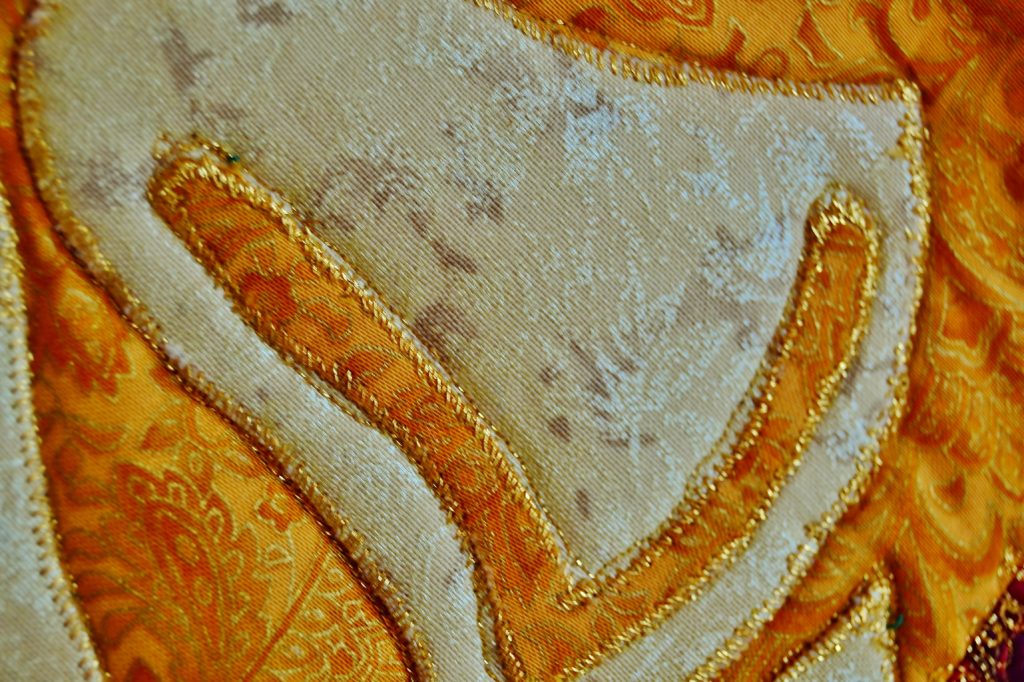
This was one of the first projects I used Wonder-Under on, and while it still wasn’t as good as it is today – you can see the result was smooth and professional. 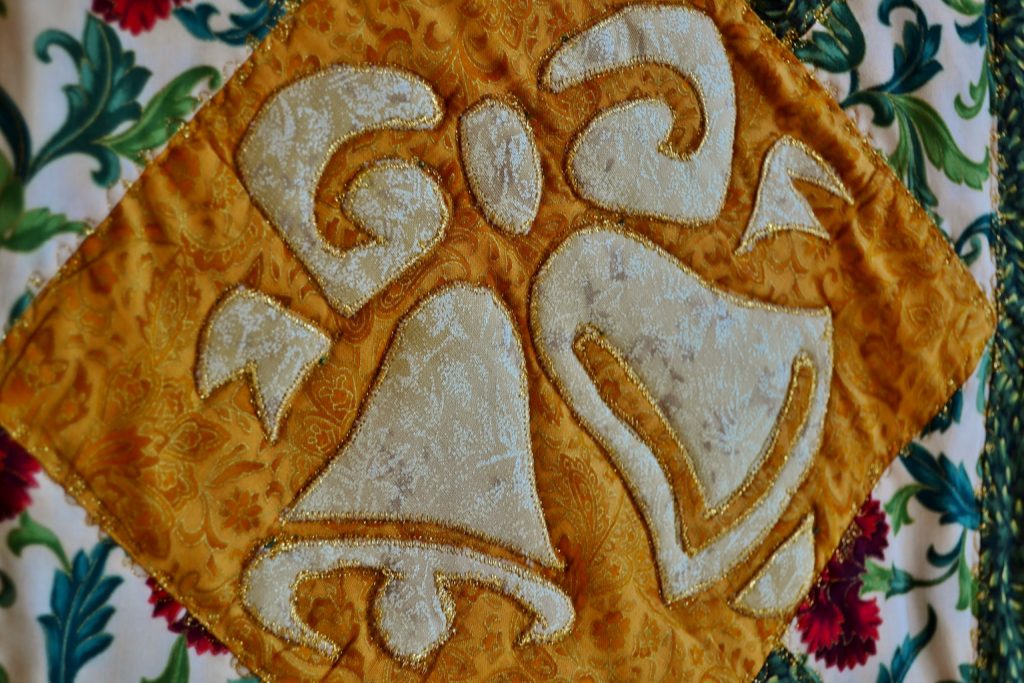
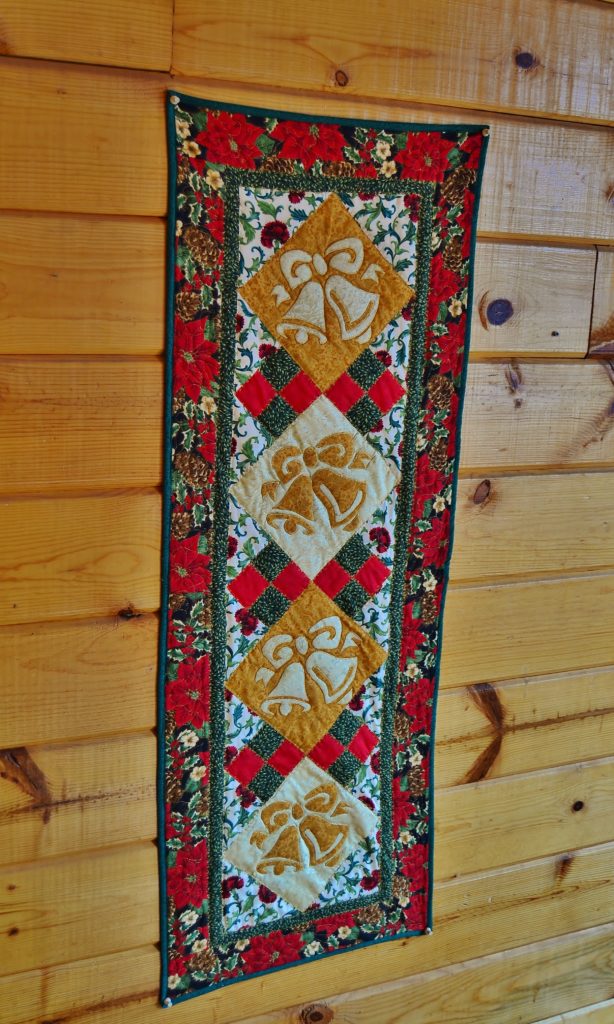
It had become thinner and much more flexible, for one thing. For another, the ironing process was much simpler, and the sticky stuff was good for at least a couple of days.
In the last few years it has improved even more, and now I buy it by the roll because I use so much of it.
The Best of the Best Product for Sewing Appliques on Quilts
Back when I first started there was only one brand, which was Pellon Wonder-Under. Being the single-minded individual I am, that brand name has stuck, and they still do have a great product. However, there are different types of Wonder-Under and I have tried most of them.
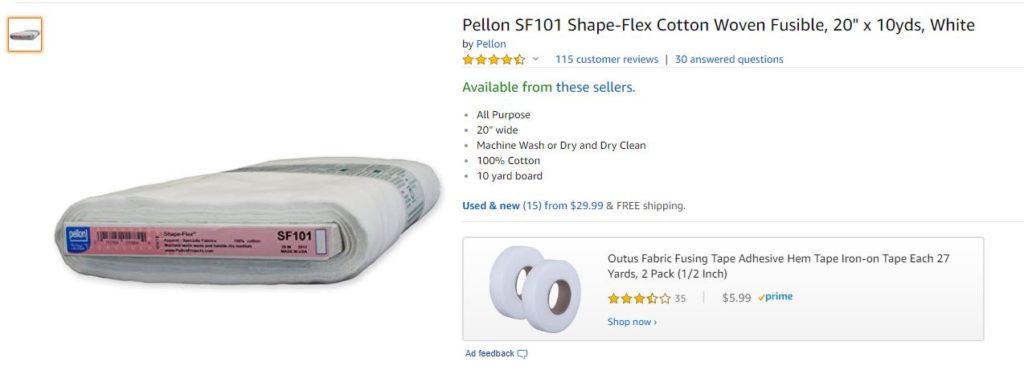
The one I finally settled on is Soft Fuse Premium.
This was recommended to me by one of the ladies from our local quilting store. It’s much thinner and flexible than the old Wonder-Under I was using, and it controls fraying better.
Soft Fuse Premium comes in packages with a few sheets in it. It’s reasonably priced, and you can get a few and decide if you like it or not.
Or, if you are a true applique lover, you can buy an entire roll – like what you’d find stocked on the shelf of a quilt store. Soft Fuse Premium is by far the most cost-effective brand for this type of bulk purchasing. If you plan on doing quite a bit of appliqueing, the rolls are definitely the better bargain, and if you purchase them online you will save even more.
How to Make Sewing Appliques on Quilts Quick and Painless Using Princess YellowBelly’s System
Of course, being me, I don’t follow the packaging instructions on how to apply my fusible webbing – because I figured out my own way.
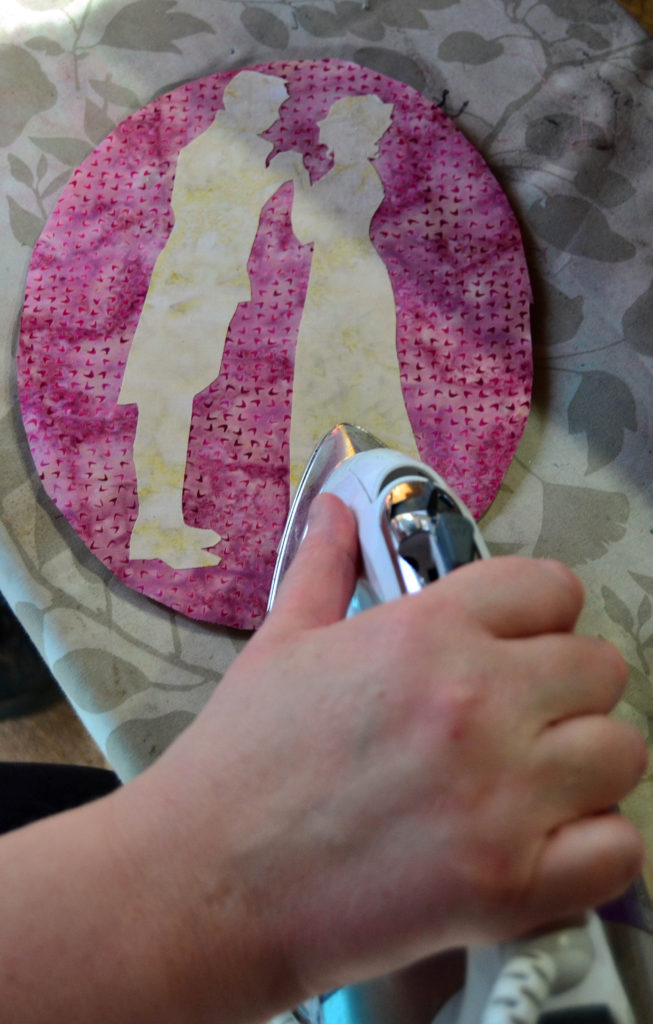
You will need; a square piece of material a little bigger than your applique shape, a square of fusible webbing about the same size, a larger piece(s) of wax paper, and an iron.
Soft Fuse is fusible on both sides with a paper backing on one side to keep that side from fusing while you’re fusing the first side.
Just remember not to touch your hot iron to the sticky side, or put the wrong side of the paper against your ironing board. If you miss on the iron you can use handy-dandy iron cleaner to get rid of the sticky stuff in just a few minutes, but if you do this to your ironing board cover you’ll need a new one since it will never come off.
I’m currently on ironing board cover number 3…
Step-By-Step Process for Wonder-Undering Fabric Shapes
- Cut a piece of Soft Fuse that fits the template(s) you will be cutting
- Lay the Soft Fuse paperbacked side down on your ironing board
- Cut a similarly sized piece of fabric, and lay it on top of the Soft Fuse (the back or wrong side of your fabric should be against the rough side of the Soft Fuse)
- Lay wax paper over the entire project
- Iron – this only takes a few seconds for cottons – but it might take longer for heavier fabrics (and it won’t work at all on velvets and fleece)
- Pull the wax paper off – the excess sticky stuff will come off on the wax paper and you can throw it away
- Don’t peel off the paper backing
- Pin your template onto the paper backing, remembering that when you cut it out and turn it over, it will be facing the other way. Make sure it’s facing the wrong way when you cut it out. Keeping the paper backing on while you cut really helps to stabilize the fabric.
- Pin all small shapes like legs, noses, etc. with very small pins, to help keep them in place as you cut
- Once your shape is cut out, remove pins, peel away the paper backing
- Flip your shape over (so the white side with the fusible webbing is against the top of your project) and position your fabric applique shape where you want it
- Iron down carefully (this can take up to five minutes)
- Sew as you please (Soft Fuse Premium maintains the stick reliably for up to a week, and it won’t shift at all as you’re sewing appliques on quilts)
I also use Soft Fuse on my fabric flowers and leaves, but this is a slightly different process. I’ll be doing a whole article on quilting with silk fabric flowers and leaves, so keep looking!

